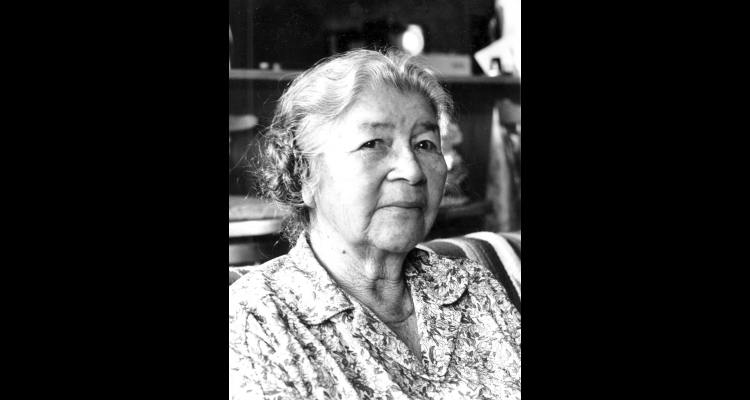Winona James: An Oral History
Winona James: A Contribution to a Survey of Life in Carson Valley from First Settlement through the 1950s
Interviewee: Winona James
Interviewed: 1984
Published: 1984
Interviewer: R. T. King
UNOHP Catalog #121
When white families began settling in Carson Valley in the 1850s, they encountered little opposition from the indigenous population. The Washoe were a gentle people, neither skilled in warfare nor given to personal violence. Content to lead a life of seasonal foraging and spiritual introspection in some of the loveliest country in the West, they were ill-prepared to resist settlers who were determined to establish farms, ranches and towns. Consequently, numbers of Washoe were rapidly subsumed into the agricultural complex that soon spread throughout the valley.
It became common for a Washoe family to attach itself to a ranch household, living on the ranch much of the year and working seasonally at agricultural or domestic labor. This practice endured until the creation in 1917 of Dresslerville, a forty-acre tract of land south of Gardnerville, set aside for Washoe habitation by William Dressler. By the 1930s many Washoe families had taken up permanent residence in Dresslerville, and the economic and social arrangements between the races that had persisted through three generations of joint occupation of the valley were transformed.
Winona James is a Washoe who was born in 1903 in a galesdangl (winter house) erected on a white man’s property in Genoa. Mrs. James was raised by her traditionalist grandparents, who alternated their residence between Lake Tahoe fishing camps in the summer and the Van Sickle ranch in Carson Valley in the winter. She attended Stewart Indian School and the Mottsville public school, learning not only the language but also the ways of the dominant non-Indian culture in the valley. As a young adult, Mrs. James left Carson Valley. She has lived in Reno and Lake Tahoe, and she currently resides in Carson City.
In this 1984 interview, Winona James concentrates on firsthand descriptions of people and events that give the reader an understanding of the nature of Washoe life in the period from her birth through the 1920s. In addition she passes on information about earlier times that was handed down through her family, and she gives some attention to post-World War II changes in relations among the races in Carson Valley. Of particular interest are passages concerning the persistence of seasonal Washoe foraging patterns and observations on attitudes toward the admission of Indian children to public schools in Carson Valley.
This introduction and oral history is reprinted with permission from the University of Nevada Oral History Archive, Special Collections and University Archives, University of Nevada, Reno.
Article Locations
Related Articles
None at this time.
Further Reading
None at this time.

